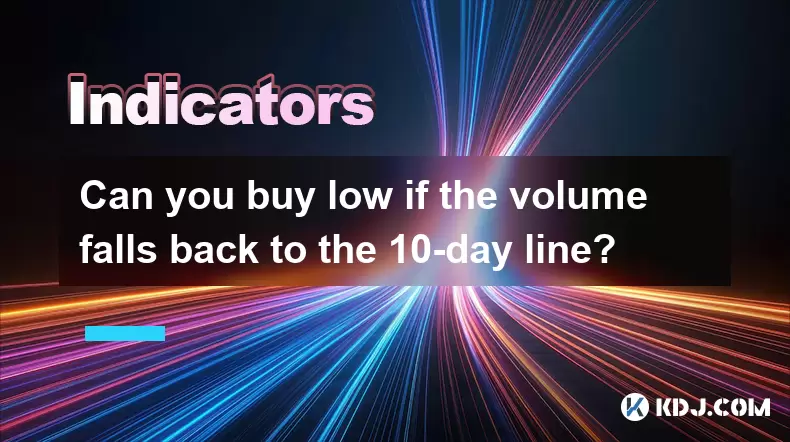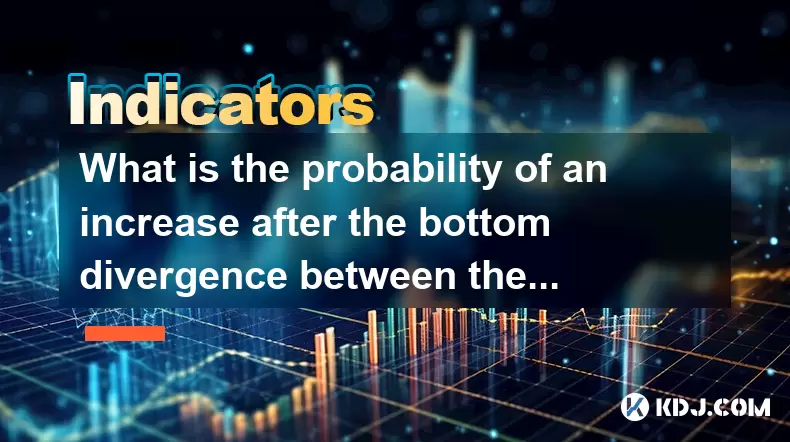-
 Bitcoin
Bitcoin $115100
-2.99% -
 Ethereum
Ethereum $3642
-1.38% -
 XRP
XRP $3.027
-5.51% -
 Tether USDt
Tether USDt $1.000
-0.05% -
 BNB
BNB $763.4
-1.32% -
 Solana
Solana $177.2
-5.42% -
 USDC
USDC $0.9999
-0.02% -
 Dogecoin
Dogecoin $0.2247
-6.47% -
 TRON
TRON $0.3135
0.23% -
 Cardano
Cardano $0.7824
-4.46% -
 Hyperliquid
Hyperliquid $42.53
-0.97% -
 Stellar
Stellar $0.4096
-6.09% -
 Sui
Sui $3.662
-2.61% -
 Chainlink
Chainlink $17.63
-3.57% -
 Bitcoin Cash
Bitcoin Cash $536.3
2.94% -
 Hedera
Hedera $0.2450
0.34% -
 Avalanche
Avalanche $23.23
-3.15% -
 Litecoin
Litecoin $112.2
-1.23% -
 UNUS SED LEO
UNUS SED LEO $8.976
-0.30% -
 Shiba Inu
Shiba Inu $0.00001341
-2.72% -
 Toncoin
Toncoin $3.101
-2.44% -
 Ethena USDe
Ethena USDe $1.001
-0.05% -
 Uniswap
Uniswap $10.08
-1.97% -
 Polkadot
Polkadot $3.938
-2.77% -
 Monero
Monero $323.9
0.87% -
 Dai
Dai $0.9999
-0.02% -
 Bitget Token
Bitget Token $4.481
-1.69% -
 Pepe
Pepe $0.00001199
-5.94% -
 Aave
Aave $288.2
-0.68% -
 Cronos
Cronos $0.1279
0.36%
Can you buy low if the volume falls back to the 10-day line?
When crypto volume drops to the 10-day moving average during a pullback, it may signal weakening selling pressure—especially if price holds support, offering a potential long entry with confirmation from RSI or candlestick patterns.
Jul 25, 2025 at 03:01 am

Understanding Volume and the 10-Day Moving Average in Cryptocurrency Trading
In cryptocurrency trading, volume refers to the total number of coins or tokens traded over a specific time period. It serves as a key indicator of market activity and investor interest. When volume declines, it often signals reduced momentum or a potential consolidation phase. The 10-day moving average of volume is a tool traders use to smooth out daily fluctuations and identify trends in trading activity. By comparing current volume to this average, traders can assess whether trading is above or below typical levels.
When volume falls back to the 10-day moving average, it may indicate that the intense buying or selling pressure has subsided. This can happen after a sharp price move, where high volume drives the price up or down, followed by a cooling-off period. Traders often interpret this as a potential opportunity to enter a position, especially if the price has corrected during this period. However, it's crucial to analyze whether the price action aligns with the volume signal.
Interpreting Price and Volume Alignment
To determine whether buying at low volume near the 10-day volume average is a sound strategy, traders must examine the relationship between price and volume. A drop in volume during a price correction can suggest that selling pressure is weakening, which may precede a resumption of the prior trend. Conversely, if the price continues to decline despite low volume, it may indicate apathy rather than accumulation.
Key considerations include:
- Is the price holding above a key support level?
- Has the asset shown resilience in previous pullbacks?
- Is the broader market trend bullish or bearish?
When price holds above support and volume dips to the 10-day average, it may reflect a healthy pullback rather than a reversal. In such cases, entering a long position could be justified, especially if other technical indicators like RSI or MACD show signs of stabilization.
Using the 10-Day Volume Moving Average as a Confirmation Tool
The 10-day volume moving average should not be used in isolation. Instead, it functions best as a confirmation tool alongside price patterns and other indicators. For example, if a cryptocurrency breaks out of a consolidation pattern on high volume and then pulls back with volume dropping to the 10-day average, this could signal that the breakout was legitimate and the pullback is a retest.
Traders can apply the following steps to validate such a setup:
- Identify a recent breakout or strong upward move.
- Monitor the subsequent pullback in price.
- Confirm that volume decreases and approaches the 10-day volume moving average.
- Check for candlestick patterns like doji or hammer at key support levels.
- Use oscillators such as the Relative Strength Index (RSI) to check for oversold conditions.
If these elements align, the probability of a successful long entry increases. However, false signals can occur, especially in highly volatile crypto markets.
Practical Steps to Execute a Trade Based on Volume Drop
Executing a trade when volume returns to the 10-day average requires a structured approach. Below is a detailed walkthrough:
- Open your preferred cryptocurrency trading platform (e.g., Binance, Coinbase Pro, or TradingView).
- Select the asset you're analyzing and apply the 10-day volume moving average indicator to the volume chart.
- Switch to a candlestick chart and identify the most recent price swing high and any subsequent pullback.
- Draw horizontal support and resistance levels to determine key price zones.
- Wait for the volume bar to touch or slightly dip below the 10-day volume MA.
- Confirm that the price is near a support level or a Fibonacci retracement level (e.g., 61.8%).
- Place a limit buy order slightly above the current candle’s low to ensure execution.
- Set a stop-loss just below the recent swing low to manage risk.
- Define a take-profit level based on the nearest resistance or a risk-reward ratio of at least 1:2.
This method ensures that entries are data-driven and not based on emotion. It also emphasizes risk management, which is critical in the volatile crypto space.
Common Pitfalls and How to Avoid Them
Even with a solid strategy, traders can make mistakes when interpreting volume signals. One common error is assuming that low volume always indicates accumulation. In reality, low volume can also mean lack of interest, which may lead to sideways movement or a slow downtrend.
Other pitfalls include:
- Ignoring the broader market trend—trading against the trend increases risk.
- Failing to use stop-loss orders, which can lead to significant losses during sudden reversals.
- Overtrading based on minor volume fluctuations without confirming price action.
- Not accounting for news events or macroeconomic factors that can override technical signals.
To mitigate these risks, traders should backtest their strategy on historical data and use demo accounts to practice. They should also avoid trading during low-liquidity periods, such as weekends, when volume distortions are common.
FAQs
Q: Does a drop in volume to the 10-day average always signal a buying opportunity?
A: No. A volume drop only provides context when combined with price behavior. If the price is breaking below support or the trend is bearish, low volume may confirm weakness rather than set up a buy.
Q: How do I add the 10-day volume moving average on TradingView?
A: Click on the "Indicators" button at the top of the chart, search for "Volume," open the settings, and under "Moving Average," set the length to 10 and choose the desired color and style.
Q: Can this strategy work on altcoins with low liquidity?
A: It can, but with caution. Low-liquidity altcoins often experience erratic volume spikes that can distort the 10-day average. It's safer to apply this method to higher-market-cap assets with consistent trading volume.
Q: What time frame is best for monitoring the 10-day volume MA?
A: The daily chart is most reliable for this strategy. Shorter time frames like 1-hour or 4-hour may show too much noise, while weekly charts could delay signals.
Disclaimer:info@kdj.com
The information provided is not trading advice. kdj.com does not assume any responsibility for any investments made based on the information provided in this article. Cryptocurrencies are highly volatile and it is highly recommended that you invest with caution after thorough research!
If you believe that the content used on this website infringes your copyright, please contact us immediately (info@kdj.com) and we will delete it promptly.
- Solana, Altcoins, and Coinbase: What's the Buzz?
- 2025-07-26 06:30:12
- Ethereum, Pepeto Presale, and Market Appetite: What's the Buzz?
- 2025-07-26 06:50:12
- TOKEN6900: The Next Big Meme Coin? Presale Heats Up!
- 2025-07-26 05:30:35
- ONDO Breakout Assessment: Whales, Wallets, and What's Next?
- 2025-07-26 05:30:35
- Kaspa's Strongest Month REVEALED: New Data Shocks KAS Traders!
- 2025-07-26 04:30:12
- Cross-Border Payments Revolution: Stablecoins and Payment Providers Leading the Charge
- 2025-07-26 04:50:12
Related knowledge

What does it mean when the price breaks through the 60-day moving average with a large volume but shrinks the next day?
Jul 26,2025 at 06:01am
Understanding the 60-Day Moving Average in Cryptocurrency TradingThe 60-day moving average (60DMA) is a widely used technical indicator in the cryptoc...

What does the golden cross of EMA12 and EMA26 but the low trading volume reflect?
Jul 26,2025 at 06:44am
Understanding the Golden Cross in EMA12 and EMA26The golden cross is a widely recognized technical indicator in the cryptocurrency market, signaling a...

What does it mean when the price breaks through the 30-day moving average and is accompanied by a large volume?
Jul 26,2025 at 03:35am
Understanding the 30-Day Moving Average in Cryptocurrency TradingThe 30-day moving average (MA) is a widely used technical indicator in the cryptocurr...

What does it mean when the MACD bar turns from negative to positive?
Jul 26,2025 at 05:01am
Understanding the MACD Indicator in Cryptocurrency TradingThe Moving Average Convergence Divergence (MACD) is a widely used technical analysis tool in...

Does the golden cross of the KDJ three lines at the annual line level indicate a turning point in the big cycle?
Jul 26,2025 at 01:35am
Understanding the KDJ Indicator in Cryptocurrency TradingThe KDJ indicator is a momentum oscillator widely used in technical analysis, especially with...

What is the probability of an increase after the bottom divergence between the KDJ indicator and the trading volume?
Jul 26,2025 at 01:29am
Understanding KDJ Indicator and Its Role in Technical AnalysisThe KDJ indicator is a momentum oscillator widely used in cryptocurrency trading to iden...

What does it mean when the price breaks through the 60-day moving average with a large volume but shrinks the next day?
Jul 26,2025 at 06:01am
Understanding the 60-Day Moving Average in Cryptocurrency TradingThe 60-day moving average (60DMA) is a widely used technical indicator in the cryptoc...

What does the golden cross of EMA12 and EMA26 but the low trading volume reflect?
Jul 26,2025 at 06:44am
Understanding the Golden Cross in EMA12 and EMA26The golden cross is a widely recognized technical indicator in the cryptocurrency market, signaling a...

What does it mean when the price breaks through the 30-day moving average and is accompanied by a large volume?
Jul 26,2025 at 03:35am
Understanding the 30-Day Moving Average in Cryptocurrency TradingThe 30-day moving average (MA) is a widely used technical indicator in the cryptocurr...

What does it mean when the MACD bar turns from negative to positive?
Jul 26,2025 at 05:01am
Understanding the MACD Indicator in Cryptocurrency TradingThe Moving Average Convergence Divergence (MACD) is a widely used technical analysis tool in...

Does the golden cross of the KDJ three lines at the annual line level indicate a turning point in the big cycle?
Jul 26,2025 at 01:35am
Understanding the KDJ Indicator in Cryptocurrency TradingThe KDJ indicator is a momentum oscillator widely used in technical analysis, especially with...

What is the probability of an increase after the bottom divergence between the KDJ indicator and the trading volume?
Jul 26,2025 at 01:29am
Understanding KDJ Indicator and Its Role in Technical AnalysisThe KDJ indicator is a momentum oscillator widely used in cryptocurrency trading to iden...
See all articles

























































































